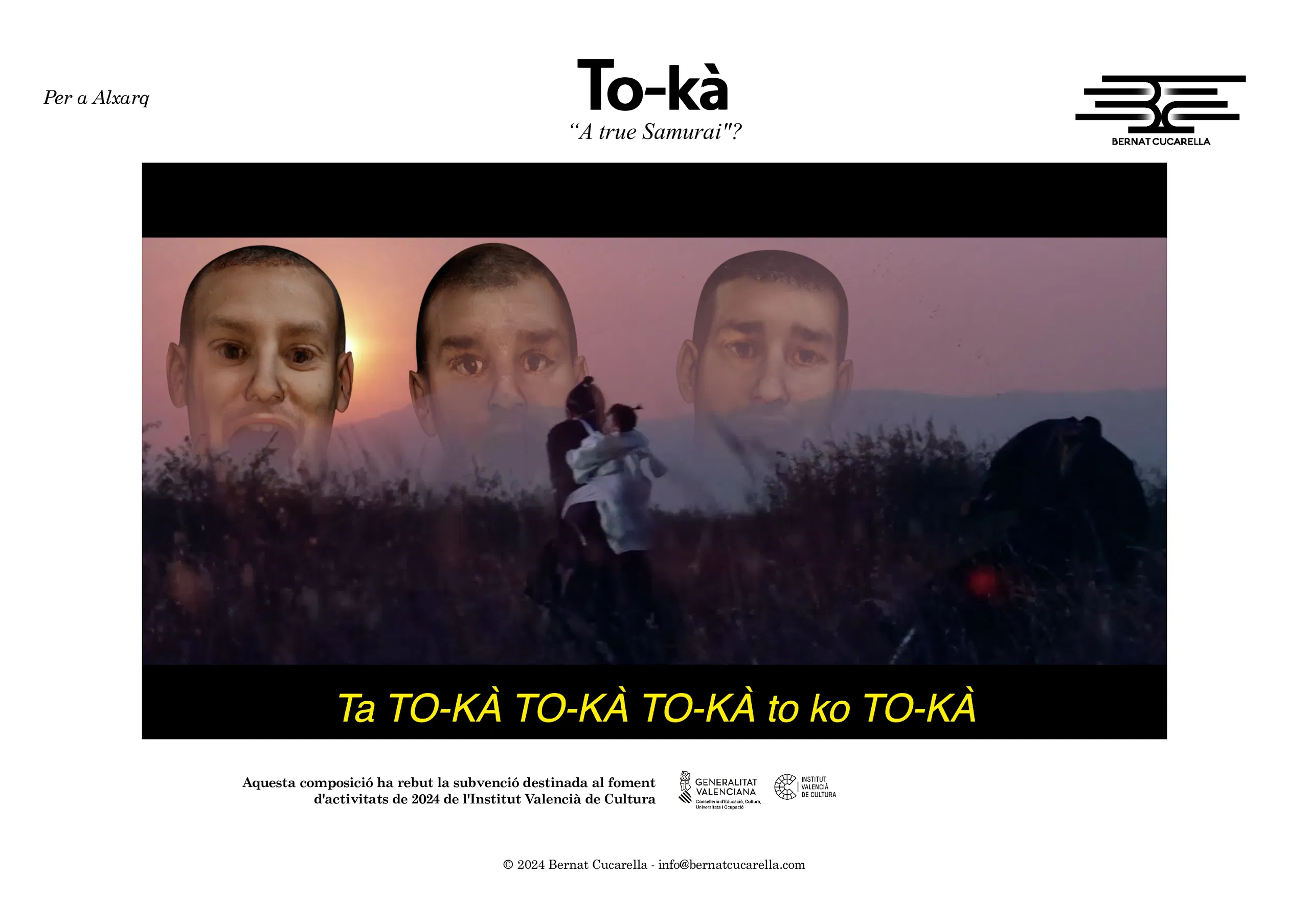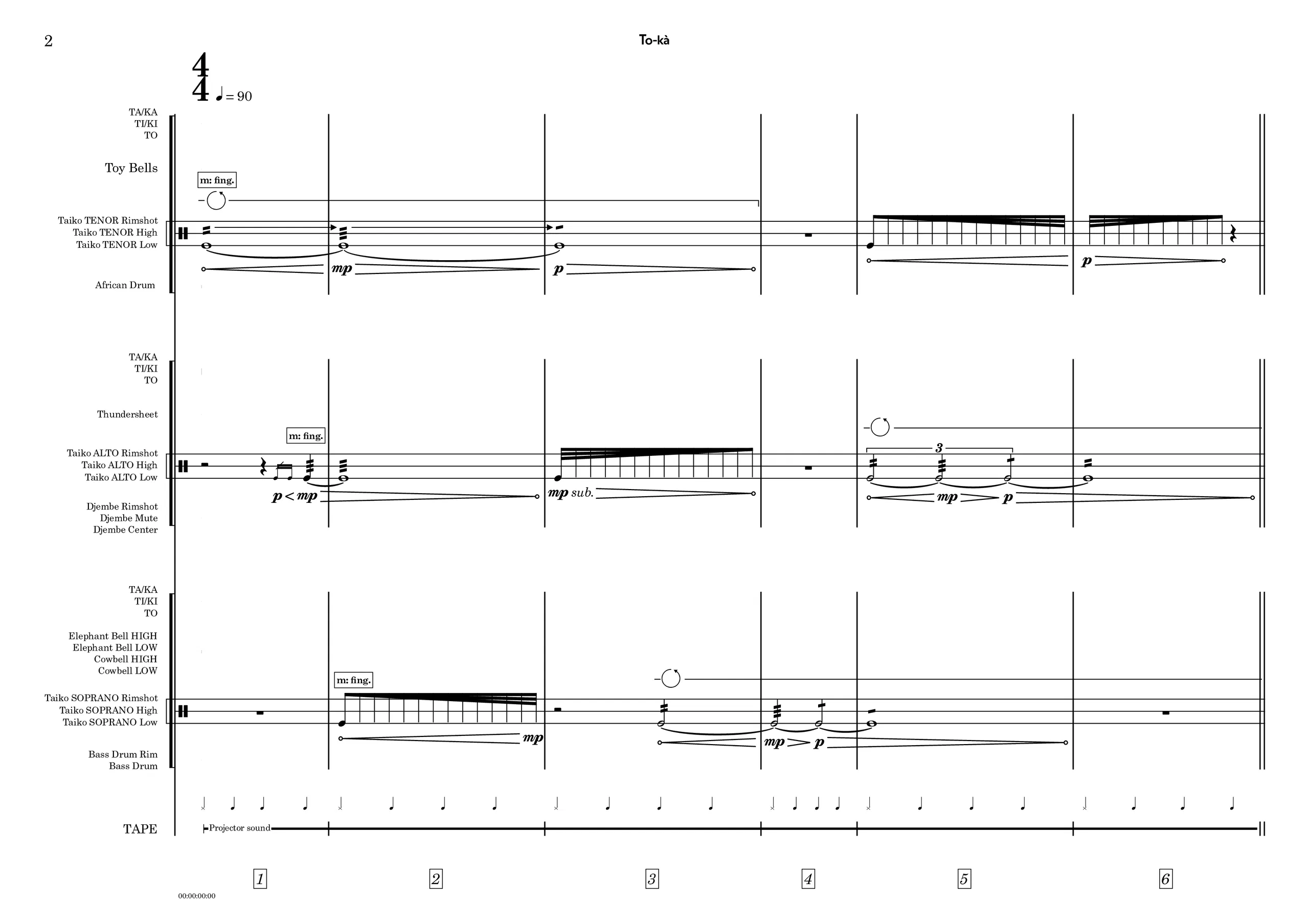

1 / 42
0:00/0:00
Trio
2024
Unpitched Percussion
- Program Notes
This work has been created for the Alxarq trio, who were the first to perform it. It has also received financial support from the Instituto Valenciano de Cultura in the 2024 music promotion grants.
This work explores the relationship between the performer's voice and the instruments as some rhythmic percussion arts do, like Konnakol, which involves assigning syllables to the typical strokes of the tabla to study and interpret its music. In “To-kà,” this resource is also used as a rhythmic and timbral scenic element. The instruments have been chosen considering the timbral coherence with the voice but also as a reminder of those tribal music styles that use these vocal techniques.
Regarding the visuals, two techniques have been used. On one hand, public domain samurai films have been employed, and on the other hand, the faces of the performers have been superimposed in 3D. Although there is a narrative thread, the main goal of the video is not to tell a story, but for the audience to discover a type of cinema different from Western cinema. Scanning the performers' faces is a current trend in contemporary music to personalize the visual content with the same performers. In today's terms, a customized version. In this case, the characters sometimes transform into the performers themselves.
- Record Label
- Liquen Records
- Performer Credits
- Alxarq Percussió
- Publisher
- Liquen Records
- External Links